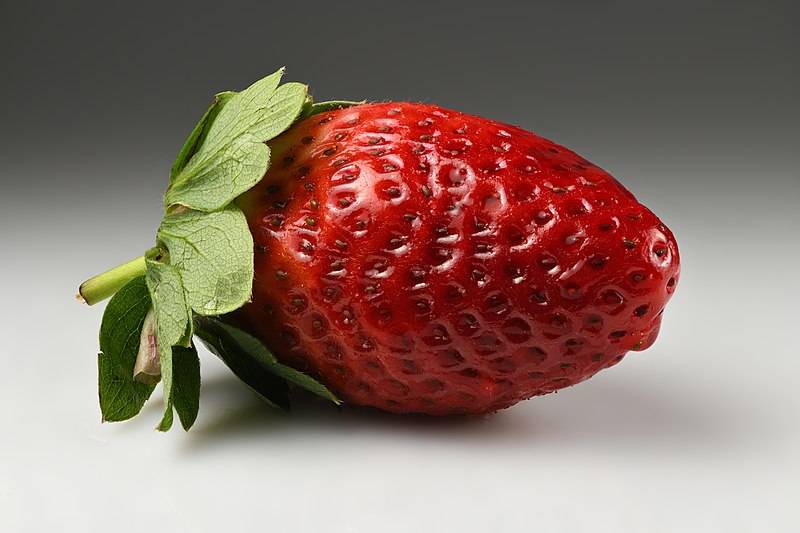"Strawberries: Nature's Succulent Treasures"
Strawberries, scientifically labeled as Fragaria x ananassa, stand as nature's succulent treasures and are recognized as one of the most adored and easily recognizable fruits globally. These vivid, heart-shaped berries are not only esteemed for their sweet and tangy taste but also highly valued for their cultural importance, nutritional content, and culinary adaptability. In this essay, we will explore the origins, cultural significance, agricultural influence, health advantages, and versatile culinary applications of strawberries, celebrating their remarkable position in the realm of fruits.
The history of strawberries spans centuries, with evidence of their consumption discovered in various regions worldwide. Wild strawberries, scientifically known as Fragaria vesca, have their roots in Europe, Asia, and North America and have been enjoyed since ancient times. However, the cultivated garden strawberry, Fragaria x ananassa, which is the most commonly consumed variety today, has its beginnings in 18th-century Europe. It emerged from the crossbreeding of two American strawberry species, resulting in a larger, more robust, and sweeter fruit.
Culturally, strawberries have played pivotal roles in diverse societies and traditions. In ancient Rome, strawberries were linked to Venus, the goddess of love, and believed to possess aphrodisiac qualities. This association has persisted through the ages, making strawberries a favored choice for romantic desserts and celebrations. In medieval Europe, strawberries were cultivated in monastery gardens and symbolized purity and perfection. During the Victorian era, strawberries became synonymous with refinement and indulgence, often gracing elaborate afternoon teas.
In the United States, strawberries have become a symbol of summer and a beloved treat at picnics, festivals, and backyard gatherings. The tradition of picking strawberries at local farms during the strawberry season remains a cherished family activity in many regions.
Moreover, strawberries have inspired art, literature, and even fashion due to their vibrant red color and unique shape. Their appeal has made them a muse for painters, poets, and designers, with the strawberry motif appearing in countless works of art, from classic still-life paintings to contemporary fashion prints.
From an agricultural perspective, strawberries are a significant crop with a global impact. They are cultivated in various regions and climates, making them available year-round in different parts of the world. Strawberry cultivation presents distinct challenges, given the fruit's delicate and perishable nature, requiring meticulous handling and attention to detail.
One of the standout qualities of strawberries is their exceptional nutritional value. These petite red gems are packed with essential vitamins, minerals, and antioxidants. They are an excellent source of vitamin C, crucial for immune support and healthy skin. Strawberries also contain vitamins A, B vitamins (including folate), and vitamin K.
Furthermore, strawberries are rich in dietary fiber, aiding digestion, promoting satiety, and stabilizing blood sugar levels. They are also known for their high levels of antioxidants, including anthocyanins and quercetin, associated with numerous health benefits, such as reducing the risk of chronic diseases and providing anti-inflammatory effects.
A remarkable aspect of strawberries is their potential contribution to heart health. Research indicates that regular strawberry consumption may lower blood pressure, decrease the risk of heart disease, and enhance cardiovascular well-being. The combination of fiber, antioxidants, and potassium in strawberries contributes to these cardiovascular advantages.
Culinary versatility is a defining characteristic of strawberries. These berries can be enjoyed in a plethora of ways, from fresh and simple preparations to complex and indulgent desserts. Fresh strawberries are a classic addition to fruit salads and breakfast dishes like yogurt and cereal. They can also be dipped in chocolate or drizzled with balsamic vinegar for an elegant and flavorful treat.
One of the most iconic strawberry desserts is strawberry shortcake, featuring sweetened biscuits or cake topped with fresh strawberries and whipped cream. Strawberry pies, tarts, and cobblers showcase the fruit's natural sweetness and juiciness. Strawberries are also a popular ingredient in jams, preserves, and jellies, preserving their delicious flavor for year-round enjoyment.
Additionally, strawberries are widely used in beverages, from smoothies and milkshakes to cocktails and mocktails. They can be muddled into strawberry mojitos, blended into daiquiris, or infused into iced tea, providing a burst of flavor and color.
Beyond desserts and beverages, strawberries add a delightful twist to savory dishes. Their sweet and tangy profile pairs well with various ingredients, making them a versatile addition to salads, salsas, and vinaigrettes. For instance, strawberry and spinach salads combine the crispness of fresh greens with the juiciness of strawberries and the nuttiness of toasted almonds, creating a harmonious and flavorful combination.
In the realm of environmental impact, strawberry production presents both opportunities and challenges. Widespread cultivation requires meticulous resource management and environmental considerations. Sustainable farming practices, such as organic cultivation and integrated pest management, aim to minimize the environmental footprint of strawberry production. These practices reduce the use of chemical pesticides and synthetic fertilizers while promoting soil health and biodiversity.
In conclusion, strawberries, with their rich history, cultural significance, agricultural importance, nutritional benefits, and culinary adaptability, remain nature's succulent treasures that continue to captivate our senses and nourish our bodies. Their vibrant red hue, sweet-tangy flavor, and myriad of uses have established them as a cherished fruit enjoyed in a wide array of culinary creations worldwide. Whether savored fresh, baked into pies, or blended into smoothies, strawberries are a symbol of nature's abundance and a lasting source of delight and inspiration.
Send a message


